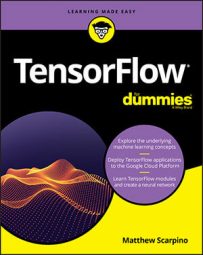Exponential and Logarithmic Operations
| Function | Description |
square(x, name=None) |
Returns the square of the argument |
squared_difference(x, y, name=None) |
Subtracts the first argument from the second and returns the square |
sqrt(x, name=None) |
Returns the square root of the argument |
rsqrt(x, name=None) |
Returns the reciprocal of the square root |
pow(x, y, name=None) |
Returns elements of the first tensor raised to the power of the elements of the second vector |
exp(x, name=None) |
Returns the exponential function of the argument |
expm1(x, name=None) |
Returns the exponential function of the argument minus one, exp(x) - 1 |
log(x, name=None) |
Returns the natural logarithm of the argument |
log1p(x, name=None) |
Returns the natural logarithm of the argument plus 1, log(x + 1) |
erf(x, name=None) |
Returns the error function of the argument |
erfc(x, name=None) |
Returns the complementary error function of the argument |
square, sqrt, and rsqrt:
t = tf.constant([4.])Thet1 = tf.square(t) # 16
t2 = tf.sqrt(t) # 2
t3 = tf.rsqrt(t) # 0.5
exp function computes the exponential functions of a tensor's elements, and expm1 subtracts 1 from each exponential. If x is a value in the input tensor, the result of expm1 equals exp(x) – 1.Similarly, the log function computes the natural logarithm of a tensor's elements. logp1 adds 1 to the value before the logarithm is computed, so if x is a value in the input tensor, the result of logp1 equals log(x + 1).

